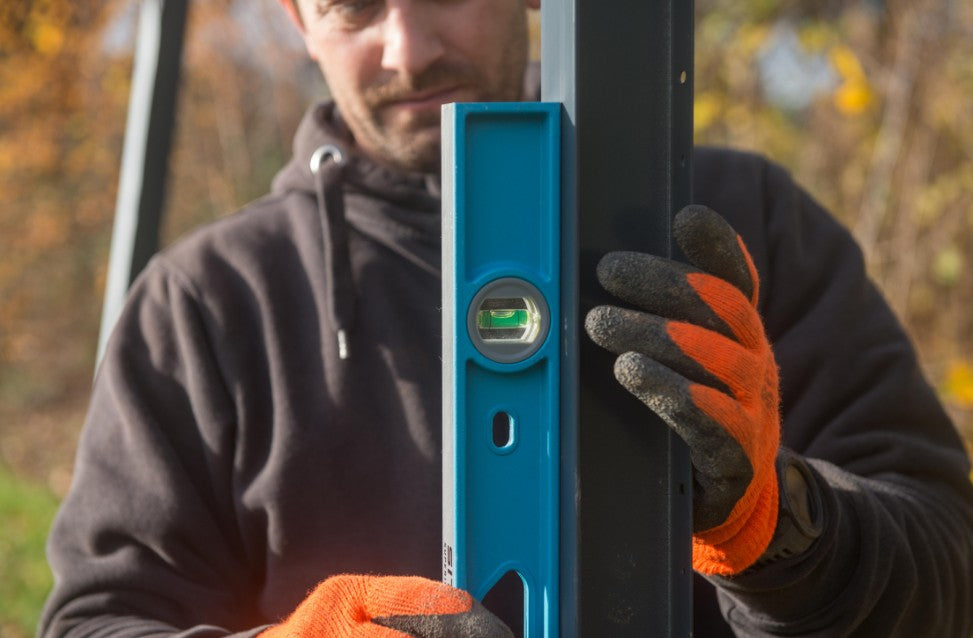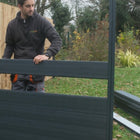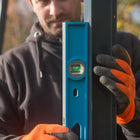Eco Friendly Fence Options For Your Home

Looking to enhance the visuals of your home whilst maintaining an eco-conscious approach? Look no further than its perimeter - with a wide range of eco-friendly fencing, you can add a secure, stylish and ‘green’ boundary for your garden, completely suited to your fencing desires.
Here are 5 eco-friendly fencing options to consider for your home.
1. Composite fencing
Using a mix of recycled timber and plastic (usually made of 96—99% recycled materials), composite fencing is an elegant, versatile fencing solution perfect for a modern home. Not only is this fence responsibly sourced, it’s durable, long-lasting and requires almost no maintenance.
What more? Due to the plastic components, composite fencing is also moisture-resistant and can last for over 20 years.
Amongst homeowners, composite fencing has become an extremely popular choice. If you’re interested in learning more about this fencing solution, view our guide covering everything you need to know about composite fencing.

2. Bamboo fencing
If you’re set on the look and feel of timber, but don’t feel comfortable opting for a timber fence, bamboo could be the choice for you. Although it appears like timber, bamboo is actually a grass and regrows up to 3 feet per day, making it an extremely sustainable resource.
While bamboo can be pricy, it’s a fantastic alternative to timber, especially if you’re passionate about preventing deforestation.

3. Living fences
With the installation of living fences, you can preserve and contribute to the environment. Made of actual vegetation such as privacy hedges, living fences are perfect for homeowners looking to maintain a natural presence around their property.
However, they do require a fair amount of maintenance work. If neglected, living fences can become overgrown and wild looking.
In short, if you’re an avid gardener with an eco-conscious mindset, a living fence is perfect for you.

4. Western Red Cedar fencing
As a timber-sourced fencing option, Western Red Cedar offers a similar finish to traditional timber fencing. The difference? Western Red Cedar has a rich, warm hue and is sustainably harvested from a forest carefully monitored by the British Columbia Forest Ministry.
This is carefully monitored to prevent outsiders from over-harvesting, whilst only 1% of the forest’s cedar is allowed to be used. The woodland is continuously being replenished to ensure sustainability.
Once crafted into a fence, cedar continues to be highly sustainable. It requires no chemical treatment (great for the surrounding life) and doesn’t decay easily.
5. Metal fencing
Depending on the kind of metal used, this type of fencing can be extremely eco-friendly.
For instance, steel fencing is often comprised of recyclable materials, so can be sustainably scrapped and repurposed at end of life. It’s also lightweight, easy to install, long-lasting, and doesn’t require chemical upkeep. Because of this, many would argue steel is the preferred option to using timber – after all, deforestation is a growing concern for our planet.

Selecting your eco-friendly fence
Whatever type of fence you decide on, take a minute to consider the environmental impact. Think about its production, estimated lifespan, required maintenance and disposal options at end of life.
Need help with your fencing? Contact our team at Birkdale today, we’re more than happy to help with anything fencing related.
DuraPost® fencing systems
Create Extraordinary Spaces
DuraPost® steel fence posts and composite fence panels. Find out why they are the ultimate fencing system.






